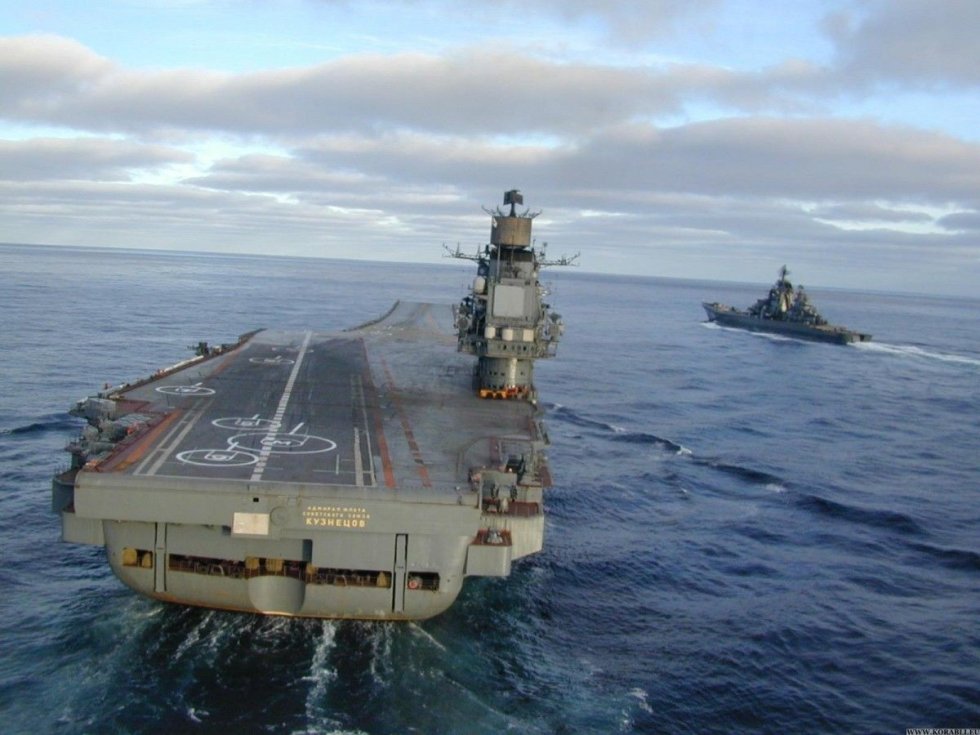The heavy aircraft-carrying cruiser Admiral Kuznetsov of project 11435 will get a digital radio-technical complex to control aircraft flights. It will make its aircraft fly in any time of the day and in complicated conditions and not only in good visibility. The load on pilots will decrease as electronics will automatically guide the landing approach, the Izvestia daily writes.
 Russian Navy Aircraft Carrier Admiral Kuznetsov. Picture via korabli.eu
Russian Navy Aircraft Carrier Admiral Kuznetsov. Picture via korabli.eu
The main Navy command told the newspaper the new radio-technical complex will ensure close-range navigation of aircraft, control of their movement and landing approach. The main aim is to ensure automatic deck landing of combat aircraft.
At present the Indian Navy is successfully operating the Russian Resistor radio-technical complex. It directs aircraft for landing (the pilot monitors the indicators to advance to the necessary trajectory). The operation can proceed automatically, but the pilot has to take over control when the aircraft approaches the warship stern and land the aircraft himself. The complex to be installed on the Kuznetsov will land it in a fully automatic regime. The modernization of the aircraft carrier will reduce minimal weather requirements for the procedure.
The Navy command said modern seaborne MiG-29K/KUB aircraft have the necessary equipment but the automatic landing regime has not been tested so far. The task is difficult as one moving object has to be guided to another one by a strictly assigned trajectory with high precision. Otherwise the aircraft can be damaged.
The commands are designed on the warship and transmitted to the aircraft. Problems with test trials in the 1990s on the Admiral Kuznetsov allowed testing only the analog line of data transmission. It is limited in speed, precision and is vulnerable to jamming. The Kuznetsov did not operate in full swing, as a result. Landing was manual and flights in bad weather and at night were a problem.
When the Soviet Admiral Gorshkov aircraft carrier was rebuilt for the Indian Navy in the 2000s, the customer demanded it had to operate round-the-clock and in any weather. Thus, the modernized Resistor complex appeared. "Patriarch of our horizontal deck takeoff and landing Viktor Pugachev said there is nothing more dangerous than night landing. The pilot is operating at the limit of his capabilities. Therefore, the first landing is very significant," said Hero of Russia test pilot Oleg Mutovin.
He said the Resistor properly performed on the Indian Vikramaditya aircraft carrier. "If the Kuznetsov upgrade gives it such a system, it will be a big breakthrough. It will allow precisely approaching for landing at night and in bad weather. Combat capabilities of the warship will considerably increase," he said.
The US Navy has a fully automatic landing system, but it is used mostly for drones. Aircraft pilots usually take over control at the final landing stage to correct mistakes, if any, the Izvestia writes.
© Copyright 2018 TASS. All rights reserved. This material may not be published, broadcast, rewritten or redistributed.










